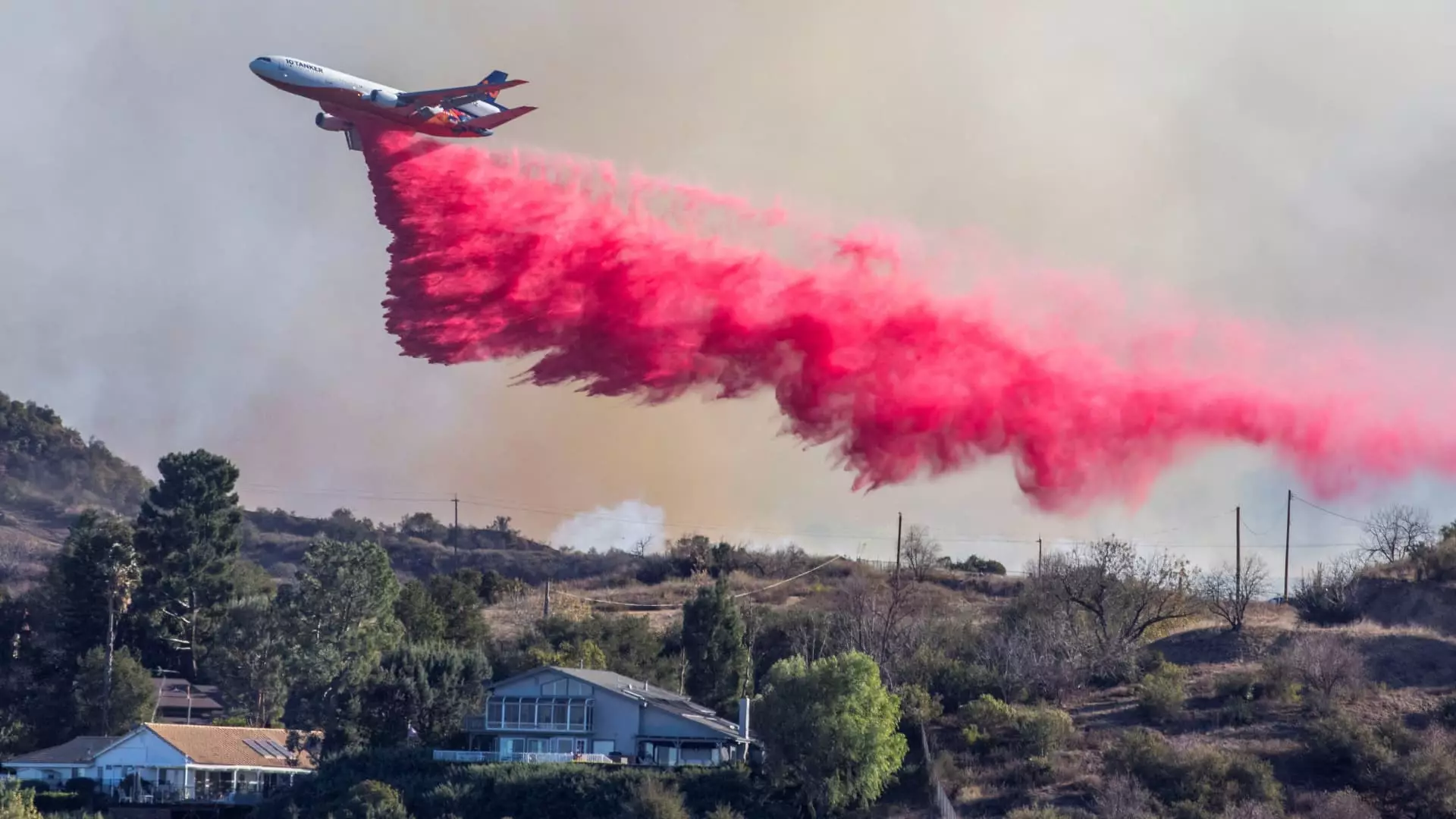As the frequency and intensity of wildfires escalate, particularly in regions like California, the need for innovative firefighting strategies has never been more pressing. The recent substantial wildfires in Los Angeles highlight an urgent challenge: how to effectively deploy aerial firefighting resources when demand outstrips supply. With traditional peak seasons shifting and climate variables intensifying, organizations that specialize in aerial firefighting face unique obstacles in their mission to protect communities and natural resources.
Historically, firefighting aircraft have been primarily managed by government agencies like the California Department of Forestry and Fire Protection (Cal Fire). However, as wildfire seasons extend and worsen, private contractors have become pivotal players in frontline firefighting efforts. For instance, 10 Tanker Air Carrier operates a fleet of reconfigured DC-10 aircraft, a unique asset among aerial firefighting resources. These large air tankers (VLATs) are deployed on contracts with governmental bodies but often find themselves in high demand even during the so-called off-peak months.
The operational world of aerial firefighting has become increasingly competitive, with international dependencies forming. Countries like Australia and nations in South America and Asia are investing in their own aerial resources, indicating a global recognition of the growing urgency of wildfire management. According to Joel Kerley, CEO of 10 Tanker, existing capacities are fast becoming inadequate for increasing demands. The combination of rising wildfire incidents and an aging fleet necessitates immediate action to enhance aviation resources for firefighting.
The Severity of Recent Wildfires
The two fires that recently gripped the Los Angeles area—the Palisades and Eaton fires—serve as critical case studies of the current challenges faced by firefighting agencies. Together, they consumed over 37,000 acres, damaged thousands of residences, and resulted in significant loss of life, showcasing not only the destruction that wildfires can wreak but also the complexity of combating them. The Los Angeles fires, fueled by extreme winds, presented unique logistical challenges for aerial responses, and they served as a stark reminder that the unpredictability of wildfires requires a level of preparedness that exceeds current resources.
Despite recent advancements and sustained efforts, the firefighting industry continues to grapple with a fundamental shortage of air tankers to meet crisis situations. The need for augmentation in aircraft capabilities is pressing; experts suggest that various international entities must expand or innovate within their fleets to address the increasing risks associated with climate change.
The intricate workings of aerial firefighting involve much more than simply dropping water and fire retardants from the sky. Combatting a wildfire requires teamwork between pilots and ground crews, with each playing a distinctive role in the overall strategy. However, conditions frequently vary, from high winds to rugged terrain, complicating tactical operations. Specially trained pilots, some with military backgrounds, must tap into their expertise to navigate these challenges effectively.
Conventional methods of aerial firefighting often utilize heavy, bright-red retardants crafted to maneuver flames away from structures and increase the survivability of the surrounding ecosystem. Extremities of weather often impede operations; as seen during the Los Angeles wildfires, strong Santa Ana winds halted critical aerial missions, showcasing the adversities confronting pilots in the line of duty.
While the demand for firefighting aircraft surges, the realities of expanding fleets present substantial challenges. The transformation of commercial jets into firefighting tools is a time-consuming process, requiring up to a year and a half for modifications. Aero Air’s Kevin McCullough highlights that retrofitting tasks cannot be rushed, necessitating meticulous attention to safety and operational efficiency.
Faced with the daunting task of scaling up their resources while dealing with technical intricacies, aerial firefighting companies strive for operational excellence but also require support through governmental policies and funding to facilitate growth.
In the quest to bolster aerial firefighting capabilities, technological advancements may hold the key. Aircraft manufacturers, like De Havilland, are readying new models of water-scooping planes, set to debut in the coming years. These innovations promise to enhance performance, including improved cockpit ergonomics and advanced water-dropping technology. As observed by industry experts, the intersection of climate change and the aging existing fleet creates an imperative for investing in newer models that can better withstand the rigors of aerial firefighting.
The escalation of wildfires demands a reevaluation of aerial firefighting strategies, emphasizing collaboration between private companies and governmental agencies. As climate change continues to impose new challenges, the industry must embrace innovation, support fleet expansion, and enhance training for pilots and ground crews. More than just combating fires, successful aerial firefighting also entails the protection of lives, properties, and vital ecosystems. Moving forward, the imperative is clear: adaptation, growth, and resilience must underpin the responses to increasingly unpredictable wildfire scenarios.

